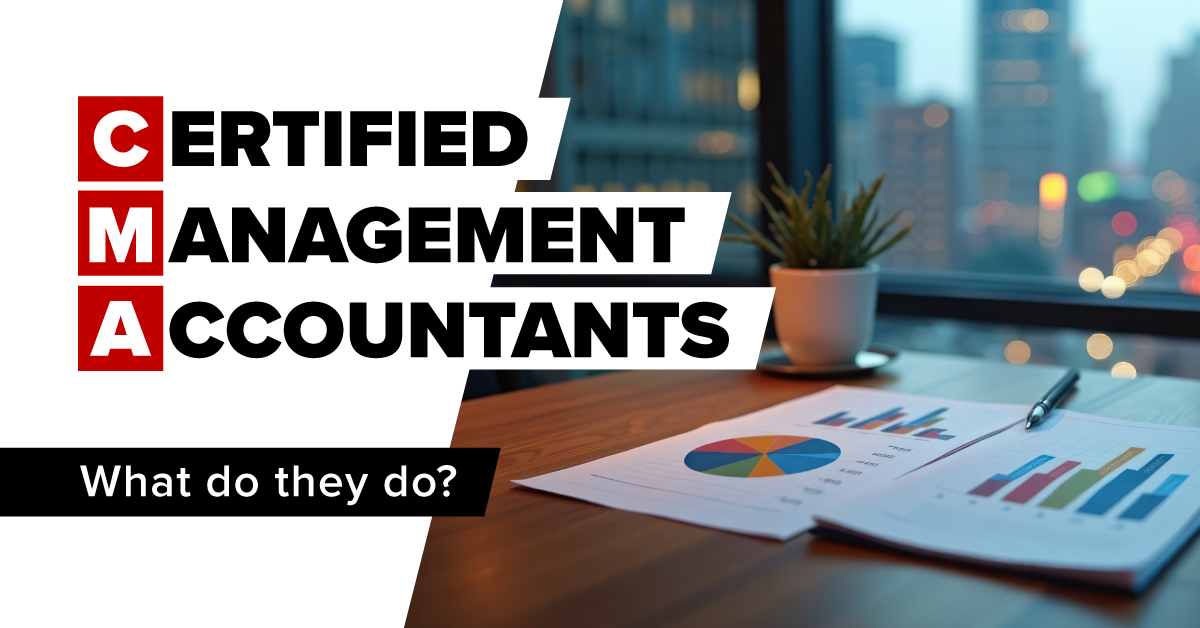Contact Us : 800.874.5346 International: +1 352.375.0772

Curious about what a Certified Management Accountant does on a daily basis and whether the CMA certification can accelerate your career?
CMAs sit at the intersection of accounting, strategy, and technology, translating complex data into clear business insight.
From building budgets that fund new products to advising the C-suite on mergers, CMAs shape an organization’s future—while earning salaries that outpace non-certified peers by more than 20 percent globally.
If you’re an accounting student, early-career professional, or career-switcher wondering what exactly does a CMA do, read on. We’ll cover daily responsibilities, salary data, career progression, and the steps to earn the credential.
Certified Management Accountants are responsible for providing financial insights and recommendations to organizations to help them achieve their goals. CMAs bridge accounting and strategy, adding value well beyond “keeping the books.”
| Key Responsibility | Why It Matters |
|---|---|
| Financial Analysis & Forecasting | Spot trends, run scenarios, and direct resources to high-ROI projects. |
| Budget Creation & Oversight | Align spending with corporate objectives and maintain fiscal discipline. |
| Management Reporting | Turn raw numbers into dashboards that executives use to steer the ship. |
| Cost & Profitability Analysis | Uncover hidden savings and boost margins. |
| Risk Management | Evaluate operational and compliance threats before they erode earnings. |
| Strategic Decision Support | Provide data-driven recommendations on pricing, investments, and expansion plans. |
A typical day as a CMA may start with variance analysis: comparing planned vs. actual results to pinpoint issues. Midday could involve a meeting with operations to refine next quarter’s budget, followed by building an ROI model for a proposed product launch. The afternoon could end with an executive debrief, translating findings into strategic recommendations. Ethics and internal-control checks punctuate each activity, reinforcing organizational integrity.
Both credentials are valuable, but CMAs wield influence inside the business, guiding future decisions rather than verifying past results.
The broader responsibilities CMAs have position them for management and C-suite roles sooner.
The Institute of Management Accountants’ 2023 Global Salary Survey Opens in new window reports that CMAs earn 21% more in average total compensation worldwide, with a U.S. median base salary of $122,000 and $135,000 for total compensation. Learn more about CMA salary potential in our full guide.
Employment demand also remains strong: the Bureau of Labor Statistics projects 6% growth Opens in new window for accountants and auditors through 2033.
Entry-Level Roles
New CMAs often start as staff accountants or junior analysts, performing month-end close, budgeting, and cost analysis.
Mid-Career Roles
After 4-8 years, CMAs progress to Finance Manager or Controller—overseeing teams, crafting internal controls, and advising executives.
Executive Trajectory
Seasoned CMAs can ascend to VP of Finance or CFO, steering company strategy and culture. Their balanced skill set (financial rigor plus strategic vision) makes them natural C-suite contenders.
73% of CMAs said the certification improved available career opportunities
Ask yourself these key questions:
If you answered “yes,” the CMA credential could be your launchpad.
To meet the CMA requirements, you must have a bachelor’s degree plus two years of relevant professional experience in management accounting or financial management.
You’ll study for and take the CMA exam parts individually. Each part includes 100 MCQs and two essays, which you’ll have four hours to complete. The global CMA exam pass rate is around 50% for both parts so it’s important to dedicate enough time to studying.
| Part | Topics |
|---|---|
| Part 1 | Financial Planning, Performance, & Analytics |
| Part 2 | Strategic Financial Management |
Check out our CMA Study Schedule blog to learn how much time you need to study and get our tips for creating a study plan you can stick to.
Our CMA Review course has everything you need to pass the CMA exam on the first try so you can start reaping the benefits of your certification sooner. We offer thousands of multiple-choice and essay questions, an adaptive learning platform, and Personal Counselors to guide you to a passing score.